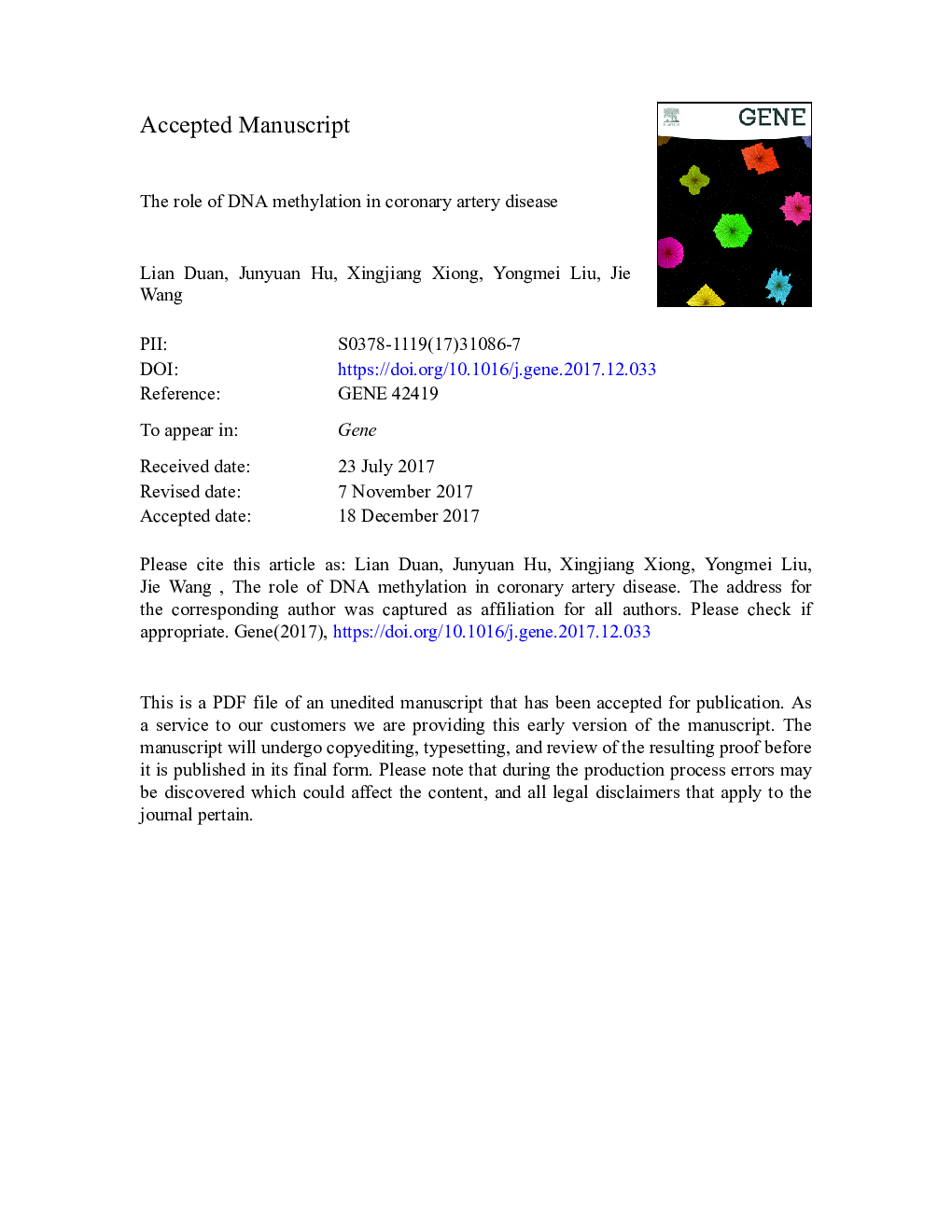| Article ID | Journal | Published Year | Pages | File Type |
|---|---|---|---|---|
| 8645549 | Gene | 2018 | 18 Pages |
Abstract
Epigenetic studies have identified DNA methylation in coronary artery disease (CAD). How the critical genes interact at the cellular level to cause CAD is still unknown. The discovery of DNA methylation inspired researchers to explore relationships in genomic coding and disease phenotype. In the past two decades, there have been many findings regarding the relationship between DNA methylation and CAD development, and the DNA methylation of critical genes have been found to be significantly changed during CAD, including DNA methylation at homocysteine, Alu and long Interspersed Element 1 (LINE-1) repetitive elements. Here, we provide a brief overview of the biology and mechanisms of DNA methylation and its roles in CAD. We also discuss recent findings regarding DNA methylation of homocysteine, Alu and LINE-1 and some genes on CAD in vitro and in vivo. Finally, we provide some perspectives on DNA methylation in CAD.
Keywords
(TC)(ER)(SAM)(CAD)acetyl-CoA acetyltransferase 1zinc finger E-box binding homeobox 1(BDNF)nucleotide-binding oligomerization domain containing 2ATP-binding cassette A1DNA methyltransferasesS-adenosylhomocysteine5-Aza-2′-deoxycytidineAluapolipoprotein ES-adenosylmethionineFlow-mediated dilationcoronary artery diseaseforkhead box P3LINE-1Type 2 diabetesWestern-type dietChina National Knowledge InfrastructureVascular smooth muscle cellsEndothelial progenitor cellAcute coronary syndromeCADBrain-derived neurotrophic factorDNA methylationdifferentially methylated regionshomocysteineHyperhomocysteinemiaHypercholesterolemiamonocyte chemoattractant protein-1glucocorticoid receptor genetotal cholesteroloestrogen receptor
Related Topics
Life Sciences
Biochemistry, Genetics and Molecular Biology
Genetics
Authors
Lian Duan, Junyuan Hu, Xingjiang Xiong, Yongmei Liu, Jie Wang,
